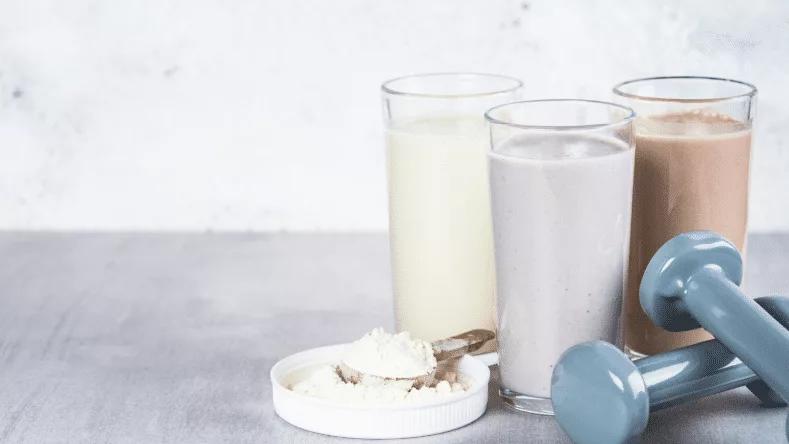Are you looking to take your muscle growth to the next level? Whether you’re a seasoned athlete or just starting out, there are effective techniques you can use to maximize your muscle building potential and achieve a stronger, more defined physique.
In this section, we’ll explore key principles of muscle building and examine proven techniques for enhancing muscle mass. From resistance training to weightlifting and targeted nutrition, you’ll discover powerful strategies for maximizing your muscle growth potential and achieving your fitness goals.
Key Takeaways:
- Effective techniques can help you maximize your muscle growth potential.
- Understanding muscle hypertrophy and development is key to achieving optimal muscle growth.
- Strength training stimulates muscle fiber recruitment and promotes strength gains, leading to enhanced muscle growth.
- Effective resistance training techniques, such as progressive overload, can accelerate muscle growth.
- Key principles of weightlifting, including compound exercises and proper form, are essential for muscle growth.
Understanding Muscle Hypertrophy and Development
If you want to maximize your muscle growth potential, it is essential to understand the science behind muscle hypertrophy and development. Muscle hypertrophy refers to the increase in muscle size and cross-sectional area, while muscle development relates to the physiological changes that occur in a muscle in response to resistance training.
When you engage in resistance training, you create microscopic tears in your muscle fibers. Your body then repairs these tears by synthesizing new protein strands, resulting in an increase in muscle fiber size and overall muscle mass. This process is called muscle hypertrophy.
The extent of muscle hypertrophy is influenced by several factors, including the intensity, frequency, and duration of your training, as well as your genetics and nutrition. Additionally, muscle development involves other adaptations, such as an increase in the number and density of muscle fibers, and improvements in neuromuscular coordination and efficiency.
Overall, a comprehensive approach to muscle growth involves a combination of resistance training, proper nutrition, and adequate recovery to optimize muscle hypertrophy and development.
The Importance of Strength Training for Muscle Growth
You’ve probably heard that strength training is essential for muscle growth, and that’s absolutely true. While cardio exercises like running and cycling have a host of health benefits, they won’t do much to increase your muscle strength or size. Resistance exercises, on the other hand, will.
Strength training works by putting your muscles under stress and causing small tears in the muscle fibers. During the recovery process, the muscles repair themselves and grow in size and strength. This process is called muscle hypertrophy, and it’s the key to developing a strong, muscular physique.
So, how exactly does strength training promote muscle growth? It all comes down to muscle fiber recruitment. When you lift weights or perform other types of resistance exercises, you recruit more muscle fibers than you would during low-intensity exercises like steady-state cardio. This increased recruitment leads to greater strength gains and muscle growth over time.
Keep in mind that strength training isn’t just about lifting heavy weights. While heavy lifting is certainly effective for building strength and muscle mass, it’s not the only way to train. Bodyweight exercises, resistance band exercises, and other types of resistance training can be just as effective, especially if you’re new to training or working out at home without access to gym equipment.
The Benefits of Strength Training for Muscle Growth
Here are some of the key benefits of strength training for muscle growth:
- Increased muscle mass and strength
- Improved body composition and overall appearance
- Enhanced bone density and joint health
- Better metabolic health and insulin sensitivity
- Reduced risk of injury and chronic disease
Getting Started with Strength Training
If you’re new to strength training, it’s important to start slowly and work with a qualified trainer or coach to ensure proper form and technique. Focus on learning the basic movement patterns and gradually increasing the weight and intensity of your workouts over time.
Aim to strength train at least two to three times per week, targeting all major muscle groups with a variety of exercises. Include compound exercises like squats, deadlifts, and bench presses in your routine, as these movements recruit the most muscle fibers and lead to the greatest gains in strength and size.
Remember, consistency is key when it comes to strength training. Stick with your workouts for at least a few months and track your progress along the way. With dedication and hard work, you’ll be amazed at how quickly you can transform your body and build the muscle mass you’ve always wanted.
Effective Resistance Training Techniques for Muscle Growth
You’ve decided to take your muscle building to the next level, and resistance training is the way to go. Resistance training involves exercising your muscles against an opposing force such as weights, bands, or bodyweight. It’s a highly effective technique for stimulating muscle growth and improving overall fitness. Here’s a breakdown of some effective resistance training techniques that can accelerate your muscle growth:
Progressive Overload
Progressive overload is a fundamental principle of resistance training. It involves gradually increasing the intensity, volume, or frequency of your workouts to continuously challenge your muscles and promote growth. You can do this by increasing the weight you lift, the number of reps you perform, or the number of sets you complete. It’s important to track your progress and make gradual changes to avoid injury and muscle fatigue.
Compound Exercises
Compound exercises are multi-joint movements that engage multiple muscle groups simultaneously. They are highly efficient in building muscle mass and strength. Examples of compound exercises include squats, deadlifts, bench press, and pull-ups. Incorporating a mix of compound exercises into your resistance training program can help you achieve maximum muscle growth.
Isolation Exercises
Isolation exercises target specific muscle groups and are great for developing muscle definition and symmetry. Examples include bicep curls, tricep extensions, and leg curls. While isolation exercises shouldn’t be the main focus of your training program, they can be useful as a supplement to compound exercises.
Circuit Training
Circuit training entails performing a series of exercises back to back with little or no rest between them. It’s a great way to maximize your time and increase your cardiovascular fitness while also building muscle. Circuit training can be done with bodyweight exercises or with weights, and can be tailored to target specific muscle groups.
Periodization
Periodization involves dividing your training program into cycles to optimize your results. It typically involves gradually increasing the intensity over a set period of time, followed by a period of rest and recovery. This technique helps prevent plateaus and promote continuous progress. To develop an effective periodization plan, it’s important to understand your body and how it responds to different types of training.
| Resistance Training Techniques | Description |
|---|---|
| Progressive Overload | Gradually increasing the intensity, volume, or frequency of your workouts to challenge your muscles and promote growth. |
| Compound Exercises | Multi-joint movements that engage multiple muscle groups simultaneously. |
| Isolation Exercises | Target specific muscle groups and are great for developing muscle definition and symmetry. |
| Circuit Training | Performing a series of exercises back to back with little or no rest between them. |
| Periodization | Dividing your training program into cycles to optimize your results. |
Resistance training is the foundation of any successful muscle building program. Incorporating a variety of effective resistance training techniques into your workouts can help you achieve your muscle growth goals. Remember to always prioritize proper form to avoid injury, and gradually increase the intensity of your workouts to promote continuous progress.
Key Principles of Weightlifting for Muscle Growth
Weightlifting is a crucial component of any muscle building program. By challenging your muscles through resistance, you can stimulate muscle growth and achieve your desired physique.
The key principles of weightlifting revolve around two main concepts: compound exercises and proper form. Compound exercises, such as squats, deadlifts, and bench presses, engage multiple muscle groups simultaneously, maximizing your muscle growth potential. Proper form and technique are also essential to prevent injury and ensure you are targeting the intended muscles.
Incorporating weightlifting into your training routine can be intimidating at first, especially if you are new to the gym. But by following these key principles, you can build a strong foundation for muscle growth and avoid common mistakes that many beginners make.
Compound Exercises for Maximum Muscle Growth
Compound exercises are multi-joint movements that engage several muscle groups simultaneously. By recruiting more muscle fibers, you can stimulate greater muscle growth and build functional strength that translates to everyday activities.
Some of the most effective compound exercises include:
| Exercise | Muscle Groups Targeted |
|---|---|
| Squat | Quads, hamstrings, glutes, calves, core |
| Deadlift | Hamstrings, glutes, lower back, traps |
| Bench Press | Chest, triceps, shoulders |
| Pull-up | Back, biceps, shoulders |
Incorporating these exercises into your weightlifting routine can yield significant results in terms of muscle growth and overall strength.
Proper Form and Technique
Proper form and technique are crucial when it comes to weightlifting. Not only does it prevent injury, but it also ensures that you are targeting the intended muscle groups for maximum growth potential.
Some key tips for proper form include:
- Keep your core tight and maintain good posture throughout the exercise
- Control the weight on both the concentric and eccentric portions of the movement
- Use a weight that is challenging but allows you to perform the exercise with proper form
- Breathe properly – inhale during the eccentric phase and exhale during the concentric phase
By following these tips, you can perform weightlifting exercises safely and effectively, maximizing your muscle growth potential and avoiding injury.
Incorporating Weightlifting into Your Training Routine
Incorporating weightlifting into your training routine can be challenging, especially if you are unsure where to start. However, by following these key principles, you can build a strong foundation for muscle growth and achieve your desired results.
A structured weightlifting program should include:
- Compound exercises for maximum muscle growth
- Proper form and technique for safe and effective exercises
- Progressive overload to challenge your muscles and stimulate growth
- Sufficient rest and recovery time for optimal muscle repair and growth
By incorporating weightlifting into your training routine, you can achieve significant muscle growth and build functional strength for everyday activities.
The Role of Nutrition in Muscle Building
To build muscle effectively, you need to fuel your body with the right nutrients at the right time. Nutrition plays a crucial role in muscle building, and it can make or break your progress. Here’s how to make sure you’re getting the right nutrition for muscle building:
Protein Intake
One of the most important nutrition factors for muscle building is protein. Protein is the building block of muscle tissue, and without adequate protein intake, your muscles won’t have the raw materials they need to grow and repair. Aim to consume at least 1 gram of protein per pound of body weight per day. Good sources of protein include:
- Lean meats (chicken, turkey, beef)
- Fish (salmon, tuna)
- Eggs
- Dairy (milk, cheese, Greek yogurt)
- Plant-based sources (beans, lentils, tofu)
Carbohydrates
Carbohydrates are important for muscle building as they provide energy for your workouts. Complex carbohydrates like whole grains, fruits, and vegetables should make up the bulk of your carbohydrate intake. These foods provide sustained energy and important nutrients like fiber, which aids in digestion. Avoid simple carbohydrates like sugary drinks and processed snacks, which provide a quick burst of energy but can lead to crashes later.
Fats
Healthy fats are also important for muscle building, as they help maintain hormone levels and support overall health. Choose sources of healthy fats like nuts, seeds, avocado, and olive oil.
Meal Planning
A meal plan can help you stay on track with your nutrition and make sure you’re getting the right balance of nutrients. Try planning out your meals for the week ahead of time so you can make sure you have all the ingredients you need on hand. Meal prepping can also be a helpful strategy for ensuring you always have healthy, muscle-building meals ready to go.
Hydration
Lastly, don’t forget about hydration. Water is essential for muscle building, as it helps transport nutrients to your muscles and aids in recovery. Aim to drink at least eight glasses of water per day, and more if you’re working out intensely.
By prioritizing your nutrition and making sure you’re getting the right balance of protein, carbohydrates, and healthy fats, you’ll be well on your way to building the muscle you want. Keep track of your food intake, and adjust your diet as needed to support your muscle-building goals.
Supplementing for Enhanced Muscle Growth
You’re working hard, eating right, and sticking to your training plan. But what if there was a way to enhance your muscle building potential even further? This is where supplements come into play.
The Benefits of Supplements
Supplements can provide your body with the extra nutrients it needs to support muscle growth. Protein powders, for example, are a convenient way to increase your daily protein intake, which is essential for building and repairing muscle tissue. Creatine, another popular supplement, helps increase your body’s ability to produce energy during intense workouts, leading to greater muscle gains over time. Branched-chain amino acids (BCAAs) can also help reduce muscle breakdown during exercise, allowing you to train harder and recover faster.
Choosing the Right Supplements
With so many supplements available, it can be overwhelming to choose the right ones for your goals. It’s important to do your research and consider factors such as cost, ingredients, and your individual needs. Look for products from reputable brands and always read the labels to ensure you’re getting the right dosage and avoiding any potential allergens or harmful additives.
| Supplement | Benefits | Recommended Dosage |
|---|---|---|
| Whey Protein | Increases protein intake, supports muscle growth and repair | 20-30 grams per serving |
| Creatine | Increases energy production, enhancing muscle gains | 3-5 grams per day |
| BCAAs | Helps reduce muscle breakdown during exercise, improving recovery time | 5-10 grams per day |
Remember to Use Supplements as a Complement to a Healthy Lifestyle
While supplements can be a powerful tool to support your muscle building goals, they should never replace a healthy diet and consistent exercise. Make sure you’re getting enough whole foods, drinking plenty of water, and getting enough sleep each night. Supplements should be used to complement your lifestyle, not replace it.
By incorporating effective supplements into your muscle building regimen, you can take your gains to the next level. Do your research, choose the right products for your needs, and continue to work hard and stay dedicated to achieving your goals.
Tailoring Your Training for Muscle Mass
To optimize muscle growth, it’s essential to tailor your training regimen specifically for muscle mass. By understanding the principles of muscle building, you can create a targeted workout plan that maximizes your gains.
Optimizing Workout Volume, Intensity, and Frequency
The key to building muscle is to challenge your body with the right amount of stress. To do this, you must optimize your workout volume, intensity, and frequency.
- Volume: Refers to the total amount of work you do in each workout, typically measured by the number of sets and reps you perform for each exercise. Aim for 3-5 sets of 8-12 reps per exercise to maximize muscle growth.
- Intensity: Refers to how heavy you lift, typically expressed as a percentage of your one-rep max. Aim for 75-85% of your one-rep max to stimulate muscle growth.
- Frequency: Refers to how often you train each muscle group. Aim to train each muscle group 2-3 times per week, allowing for adequate rest and recovery between workouts.
The Importance of Periodization
One common mistake many people make is failing to vary their training over time. This can lead to plateaus in muscle growth and increased risk of injury. To prevent this, it’s important to incorporate periodization into your training plan.
Periodization involves dividing your training into specific cycles, with each cycle focusing on different aspects of muscle growth. For example, a typical periodized plan may involve a strength phase, a hypertrophy phase, and a cutting phase.
By varying your training in this way, you can continue to challenge your body and ensure continuous progress over time.
Customizing Your Training to Your Preferences
Ultimately, the key to building muscle is to find a training plan that works for you. Some people prefer high-volume, low-intensity workouts, while others prefer low-volume, high-intensity workouts.
Experiment with different training styles and find what works best for you. Remember, consistency is key, so stick with your chosen plan and watch your muscle mass soar.
Conclusion
Congratulations, you have taken the first step towards achieving your muscle growth and building goals. By implementing the effective techniques we have discussed in this article, you can unlock your full potential for muscle growth and attain a stronger, more muscular physique.
Remember that muscle growth is a gradual process that requires dedication, commitment, and consistency. By incorporating resistance training, weightlifting, and proper nutrition into your training regimen, you can effectively enhance muscle mass and strength.
Additionally, targeted supplementation can provide an extra boost to your muscle building efforts. Remember to tailor your training regimen specifically for muscle mass, optimizing workout volume, intensity, and frequency to promote continuous progress.
With these principles in mind, you can achieve your muscle building goals and unlock your full potential for muscle growth. Embrace these effective techniques and start your transformation journey towards a stronger, more muscular physique today. Good luck!
FAQ
What are some effective techniques for muscle growth?
Effective techniques for muscle growth include resistance training, weightlifting, proper nutrition, and targeted supplementation. By incorporating these principles into your training regimen, you can maximize your muscle growth potential.
What is muscle hypertrophy and how does it develop?
Muscle hypertrophy refers to the increase in size and volume of muscle fibers. It develops through resistance training, which causes microscopic damage to muscle fibers. With proper recovery and nutrition, the damaged fibers repair and grow, resulting in muscle hypertrophy.
Why is strength training important for muscle growth?
Strength training is important for muscle growth because it stimulates muscle fiber recruitment and promotes strength gains. When you challenge your muscles with progressively heavier weights, they adapt by growing stronger and larger.
What are some effective resistance training techniques for muscle growth?
Effective resistance training techniques for muscle growth include progressive overload, where you gradually increase the weight or intensity of your exercises, and incorporating different types of resistance training such as bodyweight exercises, free weights, and machines. A structured training program that targets specific muscle groups and allows for proper recovery is also crucial.
What are the key principles of weightlifting for muscle growth?
The key principles of weightlifting for muscle growth include performing compound exercises that engage multiple muscle groups, maintaining proper form and technique to maximize muscle activation, and progressively increasing the weights lifted over time. By incorporating weightlifting into your training routine, you can stimulate muscle growth and overall strength gains.
How does nutrition impact muscle building?
Nutrition plays a crucial role in muscle building. Consuming an adequate amount of protein is essential for muscle repair and growth. Carbohydrates provide energy for workouts and help replenish glycogen stores, while healthy fats support hormone production and overall health. Proper meal planning and timing can optimize muscle building and recovery.
Do muscle building supplements help with muscle growth?
Muscle building supplements can potentially support muscle growth when combined with a proper diet and training program. Popular supplements for muscle building include protein powders, creatine, and branched-chain amino acids. However, it’s important to note that supplements are not a substitute for a well-rounded, nutritious diet.
How can I tailor my training for muscle mass?
To tailor your training for muscle mass, you can optimize workout volume, intensity, and frequency. Gradually increase the number of sets and reps you perform, lift challenging weights, and ensure proper rest and recovery. Periodization, which involves varying your training stimulus over time, can also help prevent plateaus and promote continuous progress.
You have visited 0 post(s)













